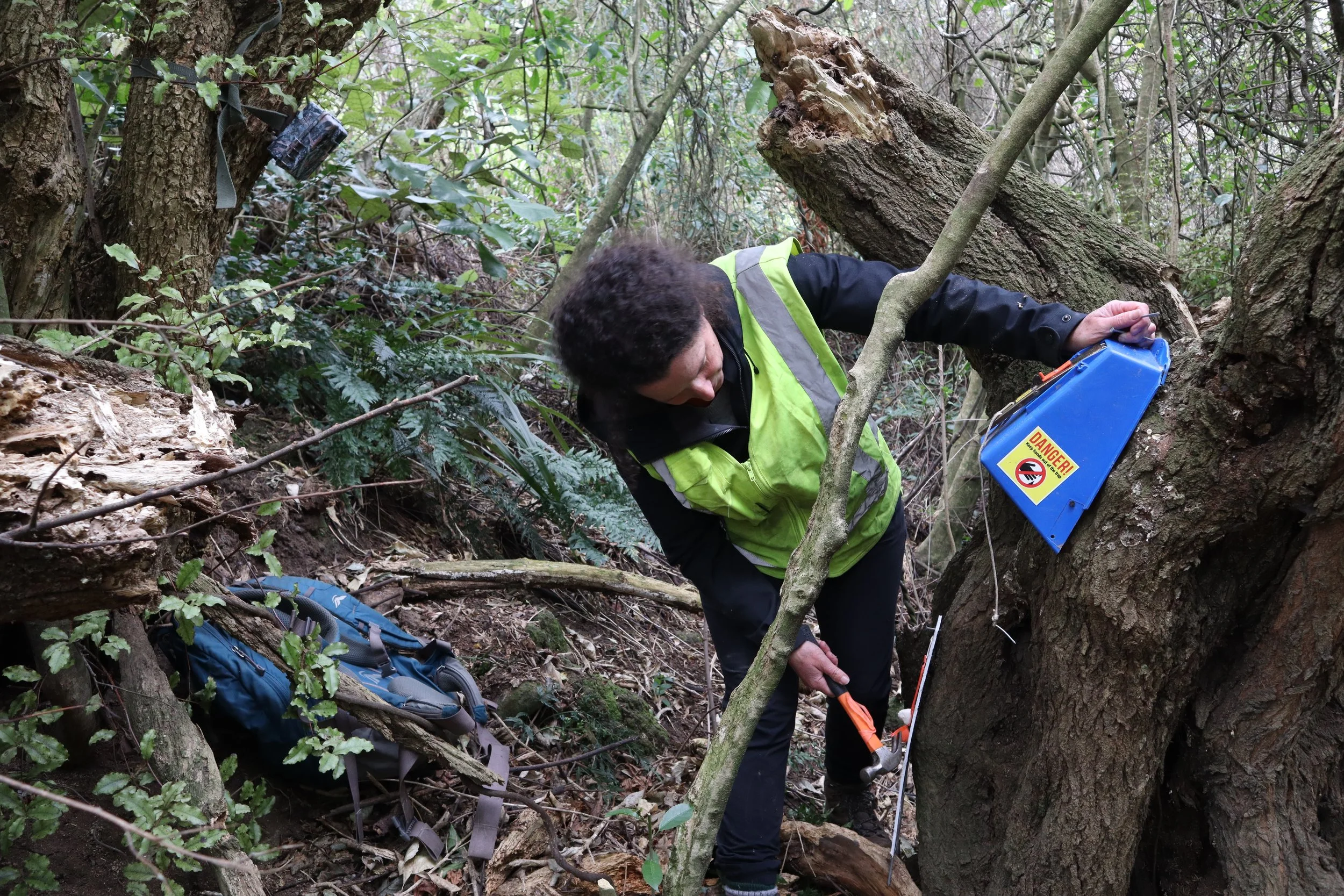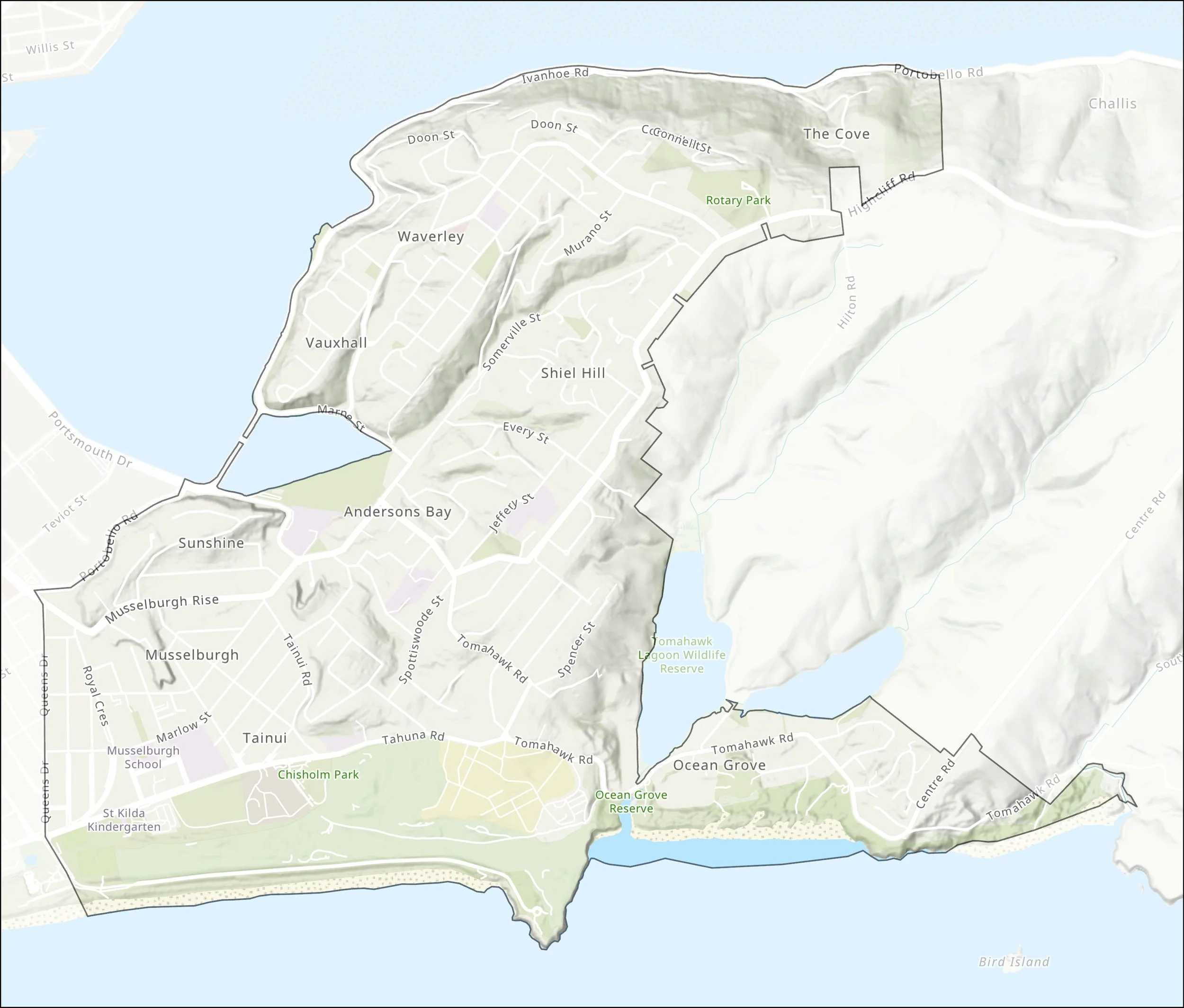Sector 5: The Final Frontier for a Possum-Free Peninsula
If you’ve ever stood on the hills of Waverley, between Ōtepoti Dunedin city and the Otago Peninsula, you’ve been looking out over one of the most important predator control zones in our region: Sector 5. This buffer zone is the last crucial barrier stopping possums from reinvading the Peninsula, where decades of work and the removal of over 20,000 possums have allowed native birds and bush remnants to recover and thrive once more.
Paula from OPBG checks one of the network of cameras monitoring the area for possum activity.
Why Sector 5 matters
Sector 5 lies at the urban–rural edge, a patchwork of private backyards, road reserves, and steep gullies scattered with pockets of bush and mature trees. Its location makes it both challenging and vital: if possums can slip through here, they can quickly repopulate the Peninsula. After years of hard mahi, for the Predator Free Dunedin delivery partners - Otago Peninsula Biodiversity Group (OPBG), the Halo Project, and City Sanctuary - Sector 5 represents the final frontier.
As Paula, one of OPBG’s operational leads, explains, “If we can hold the line here, we can keep the Peninsula possum-free for good.”
Sector 5 - as shown by the map boundaries above - sits at the base of the Otago Peninsula.
Tracking the last possums
Although possum numbers here are now very low, the team knows they’re not gone yet. Using a dense network of trail cameras set just 50 metres apart in key habitat pockets, OPBG monitors sightings and behaviour across the sector. These possum “hotspots” are identified using satellite imagery, Dunedin City Council rates maps, data from Trap.nz and community reports through the Report a Possum tool on Predator Free Dunedin’s website.
When a possum shows up on camera - or scat and other signs are found - the team responds quickly by setting traps in the area. If the animal proves elusive, they switch tactics: moving the trap, changing the trap type, or introducing a new lure. Possums are naturally curious and often can’t resist investigating something novel in their territory.
The science of a “lonely possum”
Finding the last few holdouts is harder than it sounds. A Manaaki Whenua study has shown that as possum numbers drop, individuals roam much further in search of mates. This “lonely possum” behaviour means that one animal might pass through several neighbourhoods in just a few nights. That’s why the team rely not only on cameras and traps but also on the eyes and ears of the community to report sightings that can help track a possum’s movements.
People power in predator control
Possum eradication in Sector 5 wouldn’t be possible without strong community support. Local landowners and residents have allowed the team to set cameras and traps in their lush gardens and bush blocks, critical habitats that possums love. PFD’s partnership with Dunedin City Council has also opened access to road reserves and council-owned land.
This collaboration builds on a long history of community trapping effort in the area. “The Guardians” are dedicated volunteers who have, for years, trapped possums in Sector 5.
Holding the line
For now, the work continues: cameras watched, traps moved, sightings reported. Each possum removed brings the Peninsula one step closer to being free from this destructive predator forever. Sector 5 may be steep, tangled, and at times challenging - but it’s the gateway to success.
As Paula puts it, “This is where the future of a possum-free Peninsula will be decided.”









